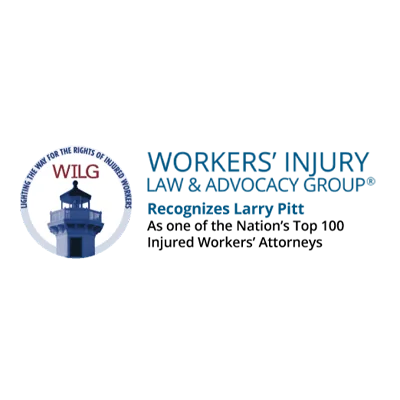Recovering
$ MILLIONS
For Injured Workers
Workers Injured in Conveyor Belt Accidents
Conveyor belts are used in many industries, including manufacturing, warehousing, and commercial fishing. While these machines are essential for efficient processing, they can also be extremely dangerous. Workers may suffer catastrophic injuries or even lose their lives due to conveyor belt accidents. At Larry Pitt & Associates, P.C. our skilled work accident lawyers have successfully represented workers who were injured in many types of workplace accidents.
Celebrating Victory in Philly Favorites Contest
At Larry Pitt & Associates, we are both humbled and honored to have been recognized as the Bronze Winner in the Philadelphia Favorites category of Workers’ Compensation Law.
Such distinction underscores our commitment to serving the people of Philadelphia, ensuring they receive the legal support and services they deserve. This acknowledgment not only celebrates our dedication to excellence but also reaffirms our mission to continue making a meaningful impact in the lives of those we represent.
GET A FREE CONSULTATION WITH LARRY PITT
Contact Larry Pitt & Associates, P.C. for More Information Regarding Workers’ Compensation Benefits
If you were injured, or you lost a loved one in a workplace conveyor belt accident, contact a Philadelphia workers’ compensation lawyer at Larry Pitt & Associates, P.C. Our experienced lawyers can help you navigate the legal system and obtain the compensation to which you are entitled. For a free consultation, please complete our contact form or call us at 888-PITT-LAW. Larry Pitt & Associates helps throughout:
- Lehigh County
- Lancaster County
- Northampton County
Causes of Conveyor Belt Accidents
The Occupational Safety and Health Administration (OSHA) requires employers to comply with certain safety regulations, such as providing the appropriate personal protective equipment (PPE) and training.
Failure to adhere to such regulations and best practices can result in injuries due to:
- Unguarded or improperly assembled conveyor belt – Guards should be present on conveyor belts to prevent workers from getting their clothes, hair, or limbs caught in pinch or nip points.
- Speeding conveyor belt – Employers may want to increase the speed of conveyor belts to increase productivity; however, belts moving at excessive speeds may cause workers to be injured.
- Defective or improperly maintained conveyor belt – Conveyor belts must be regularly maintained to ensure they are in good working order; mechanical failures can cause accidents.
- Lack of Lockout/tagout procedures – When performing maintenance on conveyor belts, employers should implement lockout/tagout procedures to prevent activation and potential injury.
- Overloaded conveyor belt – Conveyor belts that are carrying too many items or too much weight may injure workers when the items fall, especially if the machine is also unguarded.
- Lack of training – Employers should inform workers of all known risks associated with conveyor belts, as well as safety best practices for handling them; failure to do so can result in serious injuries.
Types of Injuries
Conveyor belt injuries range in severity from lacerations to amputations. Some of the more common types of conveyor belt injuries we have seen include:
- Amputations – When a worker gets a hand, arm or leg caught in a conveyor belt, it may require amputation; or they may lose their limb in the machine.
- Blunt force trauma – Heavy objects may fall off the conveyor belt, causing a struck by accident resulting in possible fractures, broken bones and other blunt force trauma injuries such as spinal cord injuries and traumatic brain injuries (TBI).
- Burns and abrasions – Conveyor belts may cause burn injuries or electrocution if there is faulty or exposed wiring.
- Crush injuries – If a worker gets his or her body part caught in/between the conveyor belt, it may result in a crush injury such as smashed fingers, internal organ rupture, and soft tissue damage.
- Degloving injuries – This type of injury occurs when the skin is forcibly pulled away, leaving the underlying body part and the associated nerves exposed.
- Fatalities – Workers may suffer fatal injuries in workplace conveyor belt accidents due to crush injuries, blunt force trauma, blood loss, or other complications.
Workers’ Compensation for Injuries Sustained in Conveyor Belt Accidents
In Pennsylvania, workers may collect workers’ compensation benefits for their workplace injuries, regardless of who was at fault for the accident. There are several forms of compensation available under the Pennsylvania Workers’ Compensation Act.
As with other work injuries, victims of conveyor belt accidents may recover reasonable and necessary medical expenses, as well as wage loss compensation. If the worker had an amputation injury or one that resulted in face or neck disfigurement, he or she may be able to collect additional specific loss benefits.
Families of workers who died as a result of their workplace injuries may also be eligible for death benefits to compensate for funeral expenses and the loss of the deceased worker’s salary.
What Our Clients Say














